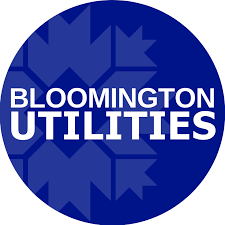
(BLOOMINGTON) – Recent testing by City of Bloomington Utilities (CBU) has shown that the lakewater entering the Monroe Water Treatment Plant is free of several compounds that have been detected in other water sources around the country.
Results of recent tests show no detectable mycrocystin or PFAS in the lakewater entering Monroe Water Treatment Plant or the drinkable water leaving the plant to be distributed to the city, and negligible levels of perchlorate in the drinking water leaving the plant (a byproduct of chlorination).
CBU is committed to ensuring that the water provided to the residents of Bloomington is within all regulatory parameters and of the highest possible quality. Every hour, drinking water sourced from Lake Monroe then filtered and disinfected through the Monroe Water Treatment Plant for distribution is monitored for compliance to standards established by the United States Environmental Protection Agency (EPA). The 2019 Water Quality Report is mailed to every water customer in the city and available at the City’s website, together with previous annual reports and a link to the latest water quality data, published at B-Clear.
In addition to monitoring the compounds regulated by the EPA, CBU has conducted tests for those not currently regulated by federal or state guidelines but that have been detected in the water supply in other areas. CBU has proactively tested for three emerging contaminants — microcystin, per- and polyfluoroalkyl substances (PFAS), and perchlorate — which are being considered for future regulation under the Safe Drinking Water Act.
“In our dedication to maintaining the highest quality water for our customers, CBU is looking at emerging contaminants and testing for pollutants beyond the scope of current regulatory requirements,” said CBU Director Vic Kelson. “We are pleased with the results of this voluntary testing, and plan to continue regular testing of these contaminants to keep customers apprised of the safety of our drinking water.”
Results of tests for each contaminant follow:
Mycrocystin
These contaminants have recently garnered media attention in the context of harmful algal blooms, overgrowths of algae that have become increasingly common across the US. Mycrocystin is a toxic compound produced by some members of the blue-green algae (also known as cyanobacteria) family. Not all blue-green algae are capable of producing mycrocystin. The results of CBU testing showed no detectable mycrocystin in the lake water entering Monroe Water Treatment Plant (raw water) or the drinkable water leaving the plant to be distributed to the city (finished water).
| Site | Date Sampled | Date Analyzed | Microcystin (μg/L) |
| Lake Monroe sample | 8/22/2019 | 8/28/2019 | <0.05 |
| Drinking water sample | 8/22/2019 | 8/28/2019 | <0.05 |
| *Concentration below the limit of quantification. |
PFAS
Per- and polyfluoroalkyl substances are a group of synthetic chemicals that includes PFOA, PFOS, GenX, and many other chemicals. More information about PFAS chemicals is available here. CBU tested for the twelve most common PFAS compounds in both the raw water and the finished water. None of the twelve constituents was detected in either sample. Although it does not is not currently regulate PFAS, the EPA has set a health advisory limit for PFAS of 70 nanogram per liter (ng/L).
Perchlorate
Perchlorate is a naturally occurring and manufactured chemical species that consists of one chlorine atom bonded to four oxygen atoms (ClO4-). The EPA has found that perchlorate may have an adverse effect on the health of persons and is known to occur in public drinking water systems with a frequency and at levels that present a public health concern. More information is available here.
CBU tested the water entering the water treatment plant from Lake Monroe and the drinking water leaving the plant for distribution to the city. There was no perchlorate detected in the raw water and 0.14 micrograms per liter (ug/L) detected in the finished water, which is a byproduct of chlorination. There is no regulatory limit currently set for this contaminant. The EPA has proposed a limit of 56 ug/L.
Please see the City of Bloomington Utilities website for more information on Bloomington’s Water Quality program. If you have questions or concerns, please contact CBU’s Water Quality Coordinator at 812-349-3655.



